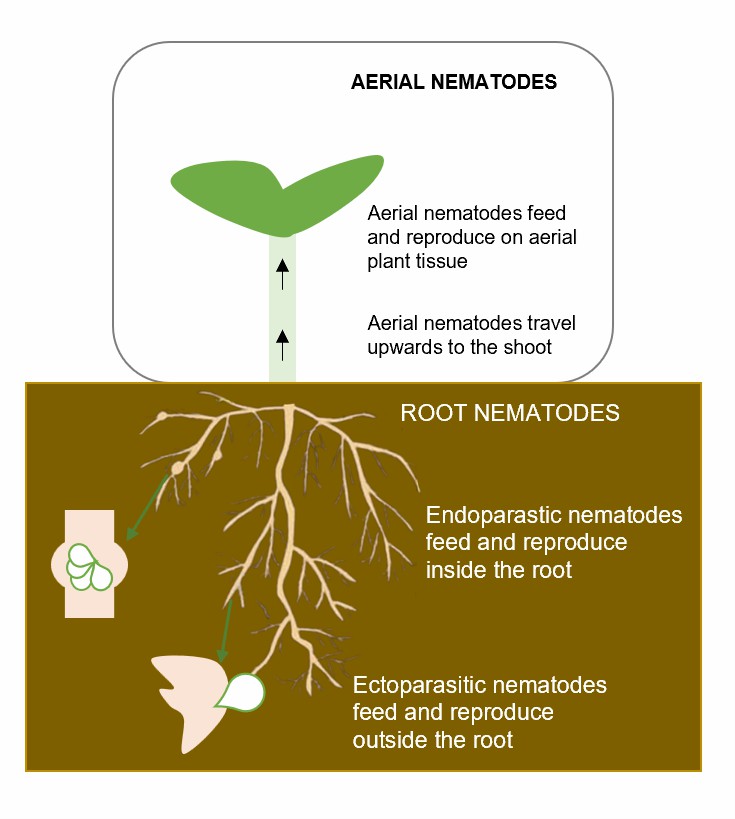Nematodes comprise a large phylum of animals that includes plant and animal parasites as well as many free-living species. Plant nematodes, generally 1 mm long and barely visible to the human eye, damage food and fiber crops worldwide and cause billions of dollars in losses annually. Some plant parasitic nematodes are ectoparasites living outside their host. These species cause severe root damage and can be important virus vectors. Other species spend much of their lives inside roots as migratory or sedentary endoparasites. Migratory parasites move through the root, causing massive cellular necrosis.
Lifeasible is a credible provider of comprehensive, high-quality services for plant science. We provide an advanced and professional platform for the analysis of the pathogenic effects of plant nematodes. We hope to partner with you to explore new frontiers in plant nematodes and accelerate your discovery.
 Fig.1 Summary of interactions between plant hosts and nematodes.
Fig.1 Summary of interactions between plant hosts and nematodes.
It is reported that nematodes interact with and increase or alter the pathogenicity of other organisms. We provide analysis services for interactions with other pathogens, including fungi, bacteria, and viruses.
With years of experience in biological services, our advanced platforms can help our clients solve various difficulties in the research of plant nematodes. Lifeasible provides our clients with direct access to our experts and responses to their questions. If you are interested in our services or have any questions, please feel free to contact us or make an online inquiry.
Lifeasible has established a one-stop service platform for plants. In addition to obtaining customized solutions for plant genetic engineering, customers can also conduct follow-up analysis and research on plants through our analysis platform. The analytical services we provide include but are not limited to the following:
Why Do Plants Blush When They Are Hungry?
April 26, 2024
STU-CRISPR System Improves Plant Genome Editing Efficiency
April 19, 2024